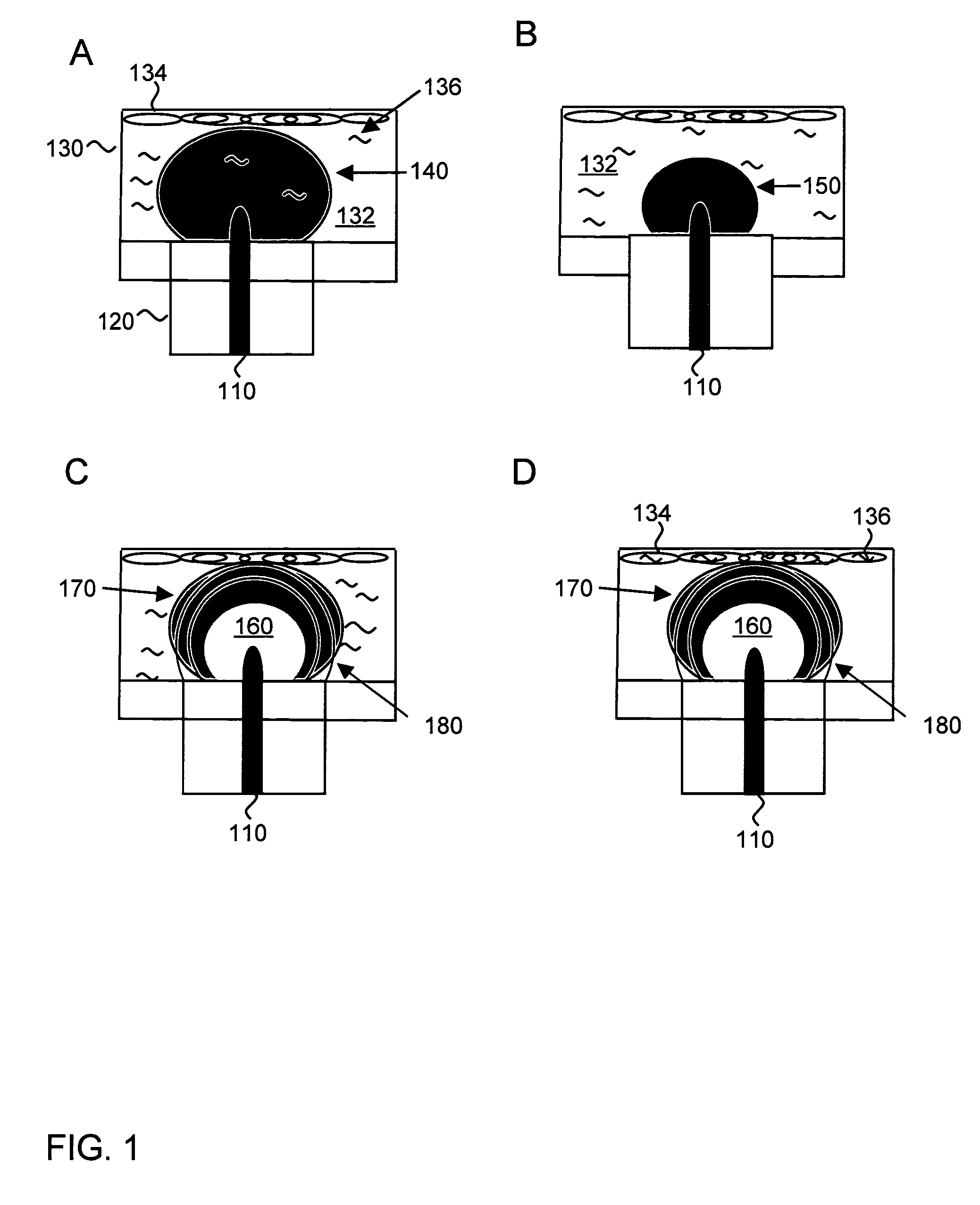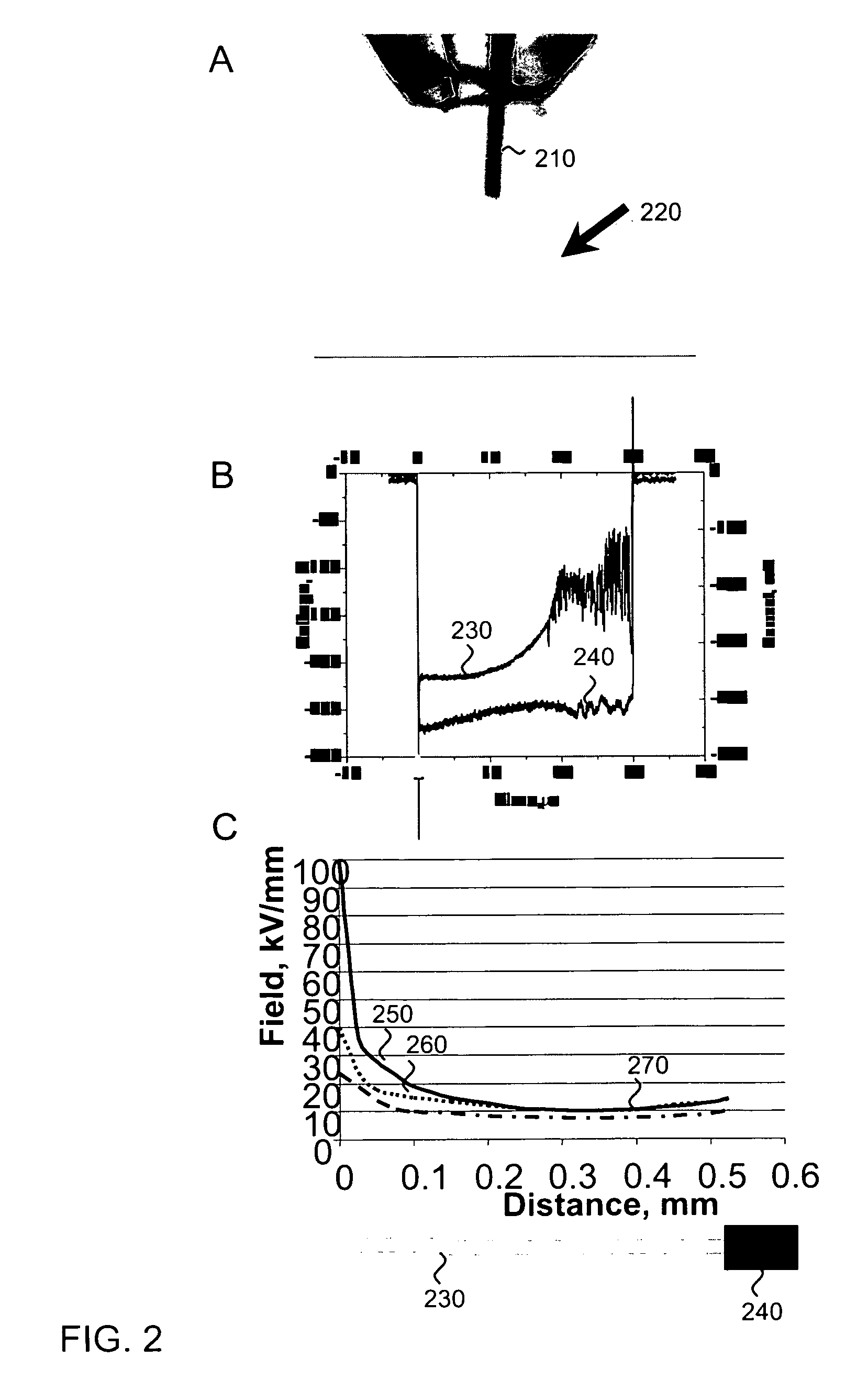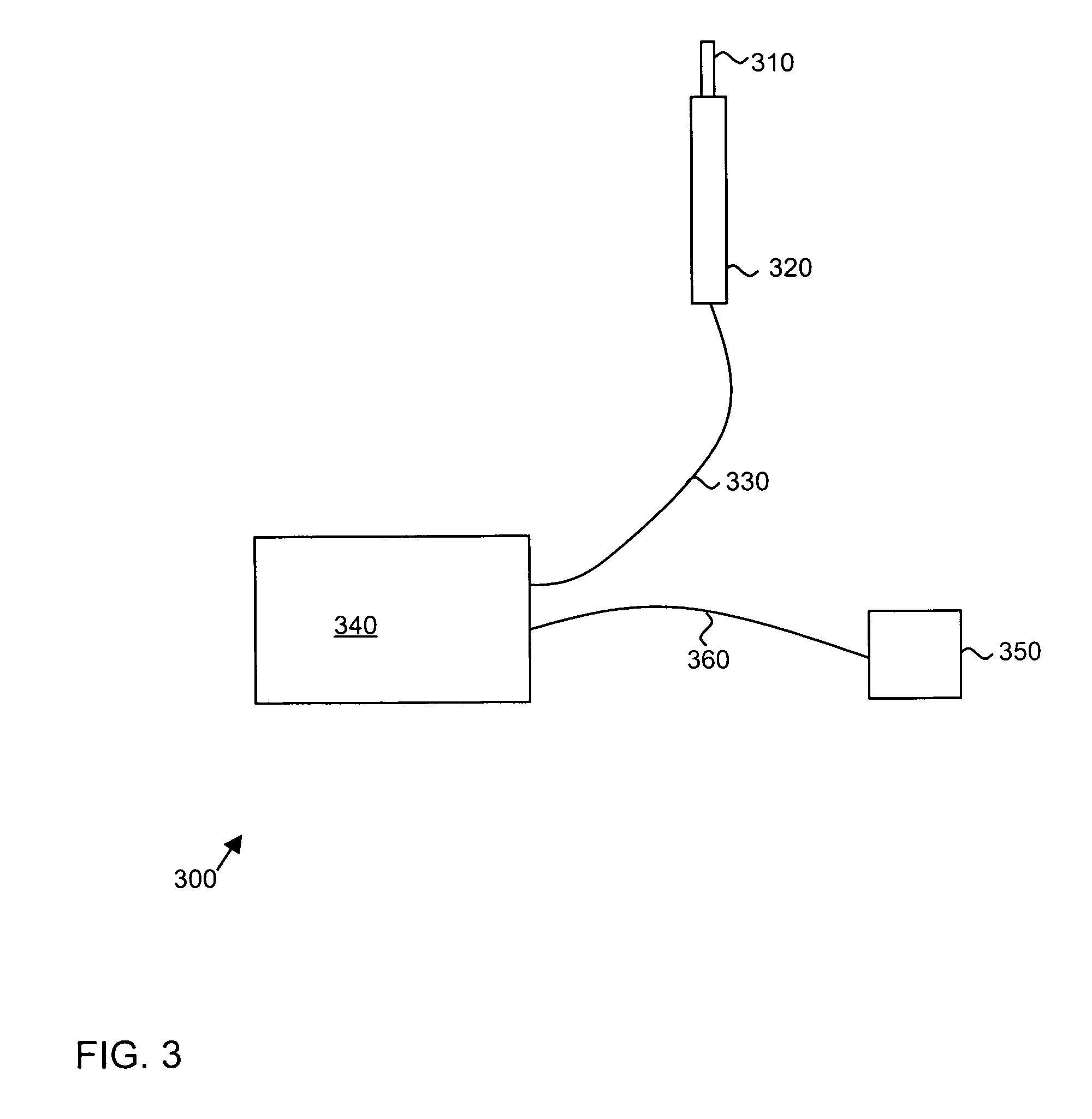Method and apparatus for avalanche-mediated transfer of agents into cells
a technology of applied in biochemistry apparatus and processes, enzymes, fermentation, etc., can solve problems such as non-uniform electric field between avalanche and cell membran
- Summary
- Abstract
- Description
- Claims
- Application Information
AI Technical Summary
Benefits of technology
Problems solved by technology
Method used
Image
Examples
example 1
Comparison of Electron Avalanche Versus Traditional Electroporation in DNA Transfer
[0038]Because electroporation protocols vary for different tissues, experiments were first conducted to determine the optimal protocol for transfecting chorioallantoic membrane (CAM) from a developing chicken egg using traditional electroporation. CAM is a live, readily available, and inexpensive tissue. Its epithelial layer is uniform and has high resistance, making it a good model for epithelial cell layers, such as retinal pigment epithelium (RPE). In this model system, 100 μg of pNBL2 plasmid DNA encoding the luciferase gene was pipetted onto the CAM, and pulses were applied. Specifically, a 250-μs, 150-V phase, followed by a 5-ms, 5-V phase in the same polarity was applied. Optimal results were achieved with 50 cycles applied at 1 Hz. The tissue was then cultured and assayed for luciferase bioluminescence. Luciferase expression using this method was about 104 photons / s.
[0039]For electron-avalanch...
example 2
Spatial Control of Avalanche-Mediated Transfection
[0040]293 cells were cultured as known in the art in a 10 cm dish 1310, with DMEM plus 3% serum, to confluence. Medium was removed and 2 mL PBS was applied to the 10 cm dish 1310. 100 microliters of DNA was added, where the DNA cassette included the luciferase gene under control of the CMV promoter. An avalanche electrode was used to permeabilize cells in a narrow streak that extended across the plate, and then in a zig-zag pattern. DNA was removed and medium was replaced. Cells were cultured for 24 hours and subjected to bioluminescence imaging (IVIS 200, Xenogen Corp). Signal 1320 is shown by shading, and background is the rest of the plate. This experiment shows that the avalanche method provides excellent spatial control of transfection in situ.
example 3
Surgical Procedure for RPE Layer Transfection
[0041]A probe for trans-scleral electroporation, as shown in FIG. 10, was used to transfect the RPE layer of a rabbit eye. The probe included a nonconductive clear plastic stripe, which was bent at the distal end for better penetration under the conjunctiva. The proximal end was mounted on a handle, which included an electric cable for the avalanche and return electrodes and a light probe for alignment. Wire electrodes of 100 micrometers in diameter were assembled on the concave side of the stripe to be faced towards the sclera. These microelectrodes were arranged as an array to provide wider surface of treatment and surrounded by the return electrode. To avoid muscular contraction due to electric stimulation the electric field should be localized within a volume of the target tissue. For this purpose small active electrodes should be surrounded by the return electrodes. Accordingly, a wide return electrode surrounding the array of active...
PUM
| Property | Measurement | Unit |
|---|---|---|
| frequency | aaaaa | aaaaa |
| frequency | aaaaa | aaaaa |
| voltage | aaaaa | aaaaa |
Abstract
Description
Claims
Application Information
 Login to View More
Login to View More - R&D
- Intellectual Property
- Life Sciences
- Materials
- Tech Scout
- Unparalleled Data Quality
- Higher Quality Content
- 60% Fewer Hallucinations
Browse by: Latest US Patents, China's latest patents, Technical Efficacy Thesaurus, Application Domain, Technology Topic, Popular Technical Reports.
© 2025 PatSnap. All rights reserved.Legal|Privacy policy|Modern Slavery Act Transparency Statement|Sitemap|About US| Contact US: help@patsnap.com



